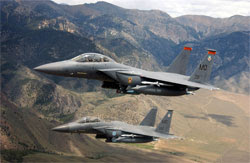
Wednesday, 21 October 2009
Compositing an Image
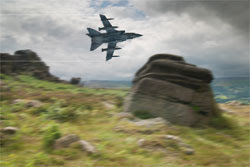 This photo is two photos put together to make one photo, this is composition. First I got the two separate images, the plane on its own and the rocky landscape.
This photo is two photos put together to make one photo, this is composition. First I got the two separate images, the plane on its own and the rocky landscape.1. First thing to do was to select the outside edge of the plane from its original background, which in this case was just plain white, which made it a lot more easier to select using the magic wand tool. After this I right clicked and inverted the selection so that the plane was just highlighted.
2. Then I contracted the selection so it was tidier, and to make it more of a realistic composition.
3. Then I copied the plane into the background image and began to change it to make it fit in, in a realistic way.
4. The first thing for this was to re size the plane so that it looked in proportion with everything else in the picture.
5. I then rotated it a bit so it didn't look like it was flying into the rock. Once I had done this I duplicated the layer, so I could add blur to the plane to create the speed.
6. I then, using the blur filter, added some motion blur to the plane. Then because I had duplicated the layer I could now rub out the front edge of the plane to make it look like it was traveling in one direction.
7. The next thing I had to do was to blur the background, once again using the motion blur, but this time I made the distance of the blur to 40pt instead of 15pt for the plane, this made the plane look like it was going faster.
8. The last thing i did was to create speed lines coming off the ends of the planes wings, I did this by selecting the areas I wanted and creating a new layer, then I filled the selection area with white and set the opacity to 20%. This created the final lines you can see in the picture.
Tuesday, 13 October 2009
Changing Moods in Photos 2
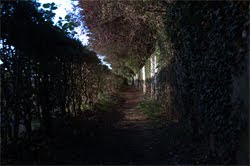
 Once again i have edited this photo on the left to change the mood. However this time have created a darker, more scarier mood, by using a cooling filter (82) with a density of 26%. Then I felt that wasn't enough so I adjusted the brightness from 0 to -106. This created the very dark and somber mood present. Below are the two screen shots that changed the photo:
Once again i have edited this photo on the left to change the mood. However this time have created a darker, more scarier mood, by using a cooling filter (82) with a density of 26%. Then I felt that wasn't enough so I adjusted the brightness from 0 to -106. This created the very dark and somber mood present. Below are the two screen shots that changed the photo:

Changing Moods in Photos 1
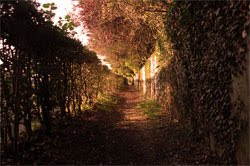
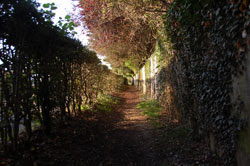 The photo on the left is one I took recently and I have used the an orange photo filter with an 87% density. The photo on the right is the finished one and it has a significant change to it. Adding the filter has changed the mood to a more warming and inviting one. Below is the print screen of the process:
The photo on the left is one I took recently and I have used the an orange photo filter with an 87% density. The photo on the right is the finished one and it has a significant change to it. Adding the filter has changed the mood to a more warming and inviting one. Below is the print screen of the process:
Wednesday, 7 October 2009
Mosaic Filter

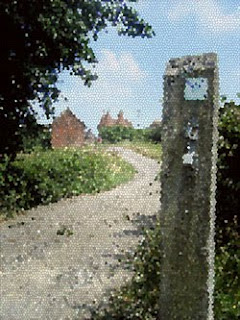
This filter was the mosaic filter which I chose when looking in the filter gallery. I applied it to the whole photo, with the cell size set to 13, the border thickness to 2 and the light intensity to 2. This type of filter breaks up the original lines that were in the picture and makes it more abstract.
Halftone Filter
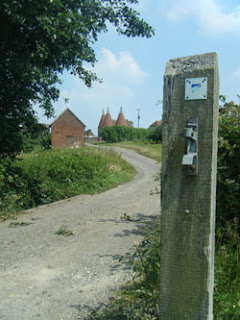
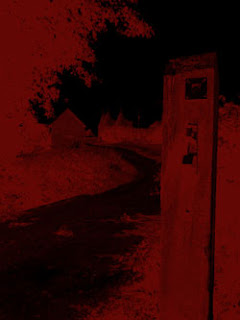
This filter is the halftone filter which I chose from the filter gallery. I set the contrast to 20 and the size of the squares to 1, so that the picture still kept some detail. I had the foreground colour as a deep red and the background colour black, this has created a very horror type feel to the photo.
Glowing Edges Filter


This is the glowing edges filter which I found in the filter gallery on photoshop. I set the edge width to 10, the edge brightness to 4 and the smoothness of the lines to 15. This created this effect where the main parts are outlined and the rest is darkened. I like how this has created a very abstract look to the original photo.
Emboss Filter

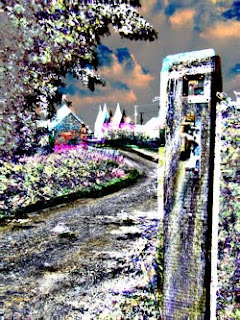
This is the emboss filter that can be found on the filter menu in photoshop. I set the angle to 131 degees, the height of the embossing to 100 pixels and the amount of embossing to 500%. This creates a very, very abstract image of the original that looks totally different. It has created two layers coming off one another and very abstract colours in the sky and on objects for example.
Cutout Filter

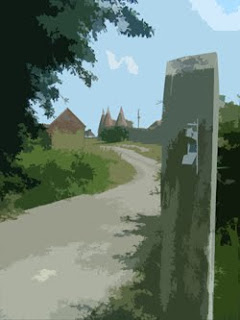
This is the cutout filter, which makes the photo simplify into basic shapes and the levels of detail can be altered. I set the number of levels to 8, the edge simplicity to 10 and edge fidelity to 3. These settings created an image that has less detail than the original but enough so that you still know what it is. I like the way that the bushes have two layers of cutout not making them completely flat.
Using Colour Brushes
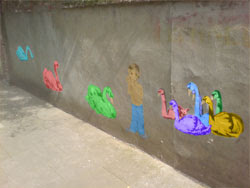
 I took this photo in St Ives, while on my holiday. I saw this Banksy style graffiti on a wall. In this photos I have used the paint brush tool, to change the colours of the swans on the wall. I coloured in all the different parts of the graffiti in different colours to make the image look different to the original one. The best bit I think is the group of swans on the right because of the different colours all put together.
I took this photo in St Ives, while on my holiday. I saw this Banksy style graffiti on a wall. In this photos I have used the paint brush tool, to change the colours of the swans on the wall. I coloured in all the different parts of the graffiti in different colours to make the image look different to the original one. The best bit I think is the group of swans on the right because of the different colours all put together.
Warming Up Images
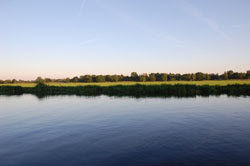
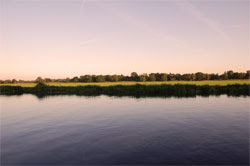 In this photo i used the photo filter, and selected the warming filter (85) and set it 46 on the slider. This created the effect on the right, it has made the whole picture more orange and creates a more sunset like feel to the image that the original. I like the way it has reflected the redness of the sky into the water below, this change of colour changes the mood in my opinion.
In this photo i used the photo filter, and selected the warming filter (85) and set it 46 on the slider. This created the effect on the right, it has made the whole picture more orange and creates a more sunset like feel to the image that the original. I like the way it has reflected the redness of the sky into the water below, this change of colour changes the mood in my opinion.Below is a screen-shot of how i changed the warming density etc.
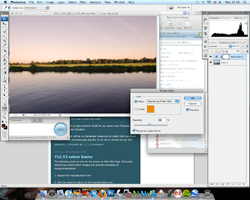
Subscribe to:
Comments (Atom)





